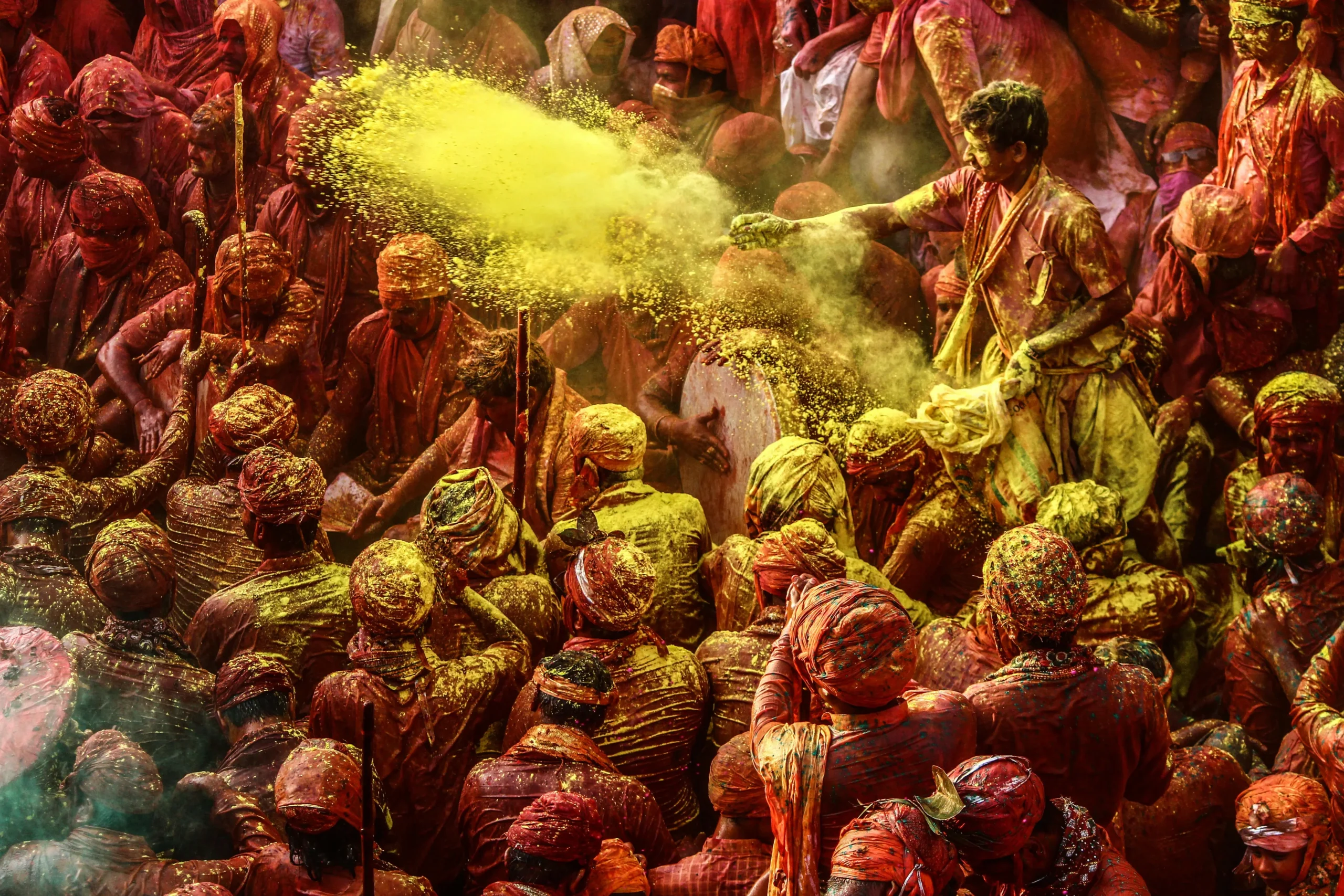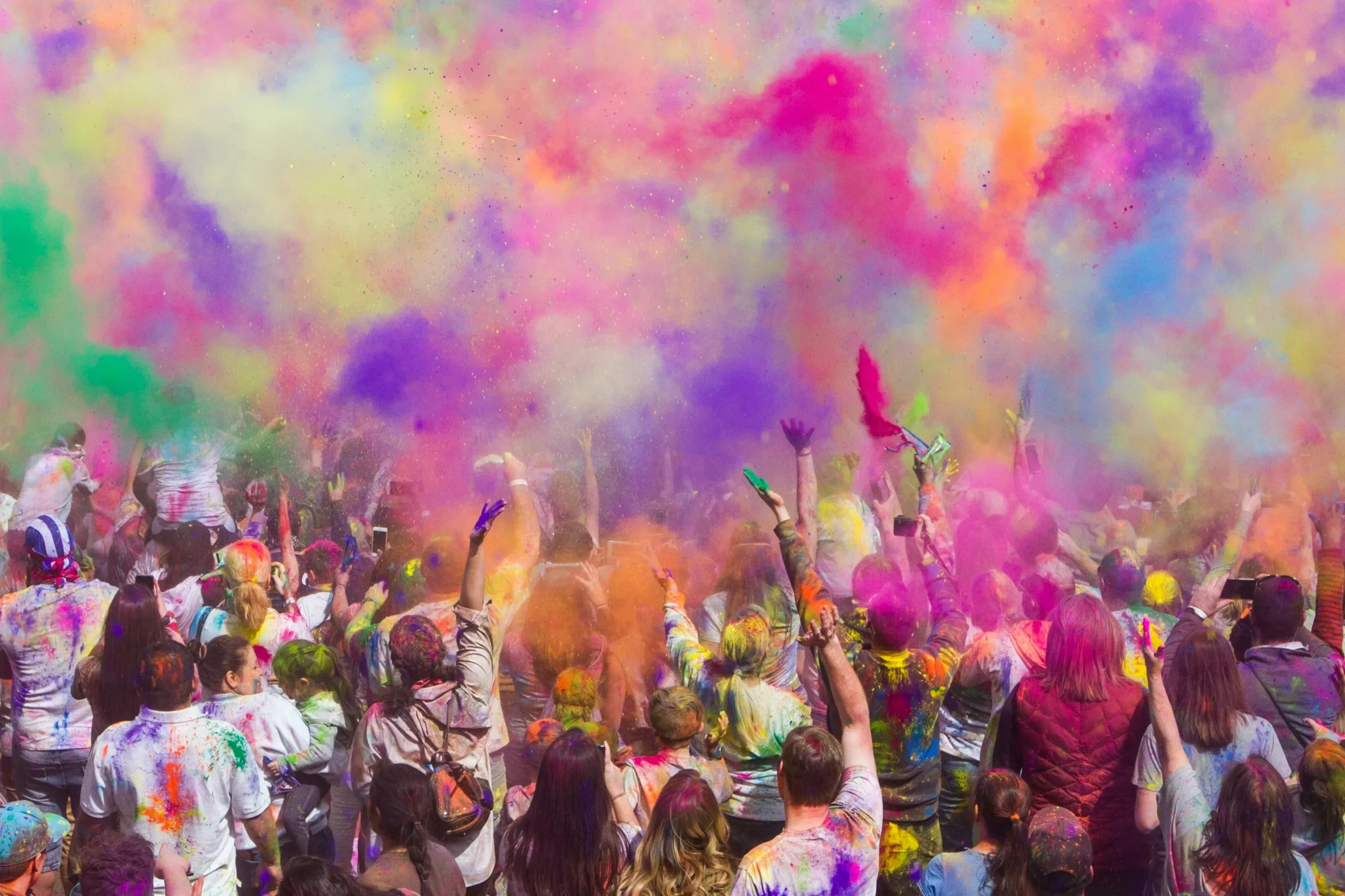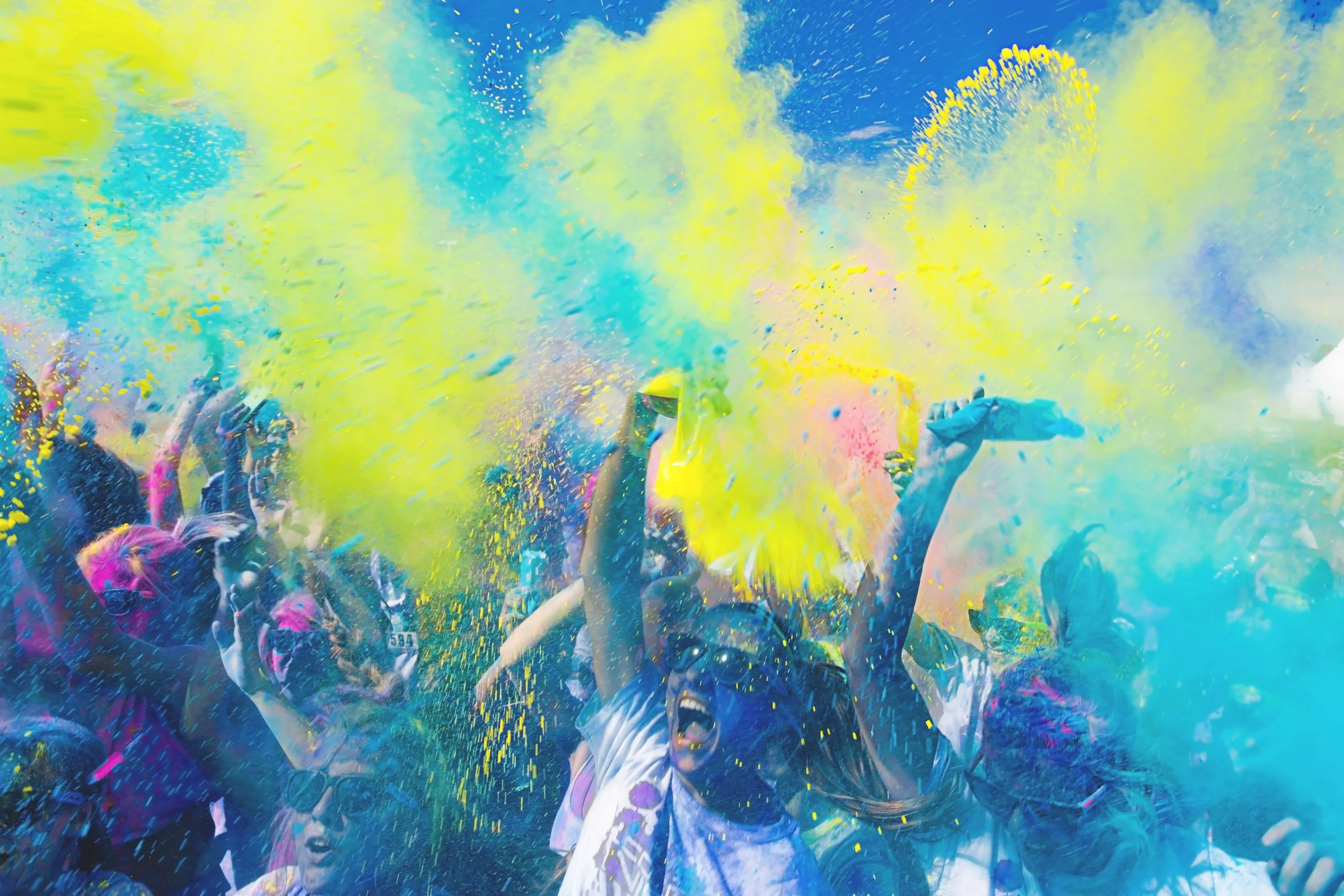The official countdown to color chaos.



A joyful chaos of vibrant color
Day(s)
:
Hour(s)
:
Minute(s)
:
Second(s)
When is Holi in 2026?
The celebration For Holi 2026 starts at sundown on Tuesday, March 3rd (3/03/2026), and continues until its ending at sundown on Wednesday, March 4th. This specific date marks the 62th day of the year. The main Holi day, which many know as Dhuleti Holi or Rangwali Holi. The timing for this vibrant event isn’t random, it all begins on the evening of the full moon night, or Purnima, which falls in Phalguna, the 12th Hindu month. Because the Hindu calendar is lunisolar, the Gregorian date for this festival of colors changes each year, but you can always expect it to arrive in February or March on the standard Gregorian calendar.
Is Holi a Public Holiday?
Yes, for those planning for 2026, rest assured that Holi is a recognized public holiday in India. It officially falls on a Wednesday, March 4th, a date you’ll find marked on various Indian holiday calendars. This means that on the day of the festival, both schools and most businesses will be closed.
What is Holi
Holi is a Hindu festival, celebrated as a spring festival in India and Nepal. It takes place on the full-moon day of the Hindu month Phalguna. The celebration involves throwing colored water and colored powders, known as gulal and pichkaris, which are enjoyed by revelers across social boundaries. Holi khelna (playing Holi) is marked by loud music, shouts of “Holi hai,” and celebration. It provides a temporary break from societal norms such as caste, gender, status, and age. At the end, people bathe, wear clean clothes, and visit friends, teachers, and relatives. The festival has also gained popularity among South Asian communities in the United States, United Kingdom, Caribbean countries, and other nations with Indian populations.
The Ancient Roots: Origins and Legends of Holi
The origins of Holi are steeped in ancient traditions and captivating mythological narratives that have been passed down through generations, each adding a layer to the festival’s rich tapestry.
The Enduring Legend of Holika and Prahlad
One origin story in the Puranas features the demon king Hiranyakashipu, a daitya (asura) who gained a boon from Brahma that he could not be killed by human or animal, inside or outside, day or night. He demanded worship from his subjects, but his son Prahlada was a devotee of Vishnu and refused. Hiranyakashipu enlisted his fire-immune sister Holika to burn Prahlada, but her immunity was transferred to the boy due to his devotion. Holika perished in the fire. Later, Vishnu appeared as Narasimha, a lion-man form, and killed Hiranyakashipu at dusk on the palace threshold. This story represents the triumph of good over evil and is commemorated during Choti Holi by lighting bonfires in a ritual called Holika Dahan or Holika’s Burning.
The Playful Romance: Krishna and Radha
Holi is especially enjoyed by worshippers of Krishna. The celebration mimics Krishna’s playful acts with the gopis (wives and daughters of cowherds) described in the Bhagavata Purana and Gitagovinda. Another source, the Garga Samhita, adds to this narrative. One legend tells of young Krishna asking his foster mother Yashoda why he was dark-skinned while Radha was fair. She suggested he smear color on Radha to make her any color he liked, which began the playful tradition of throwing colors. Holi is widely celebrated in Krishna’s birthplace, Mathura, and nearby regions such as Vrindavan and Barsana, honoring the Radha-Krishna legend.
The Story of Shiva and Kama
In southern India, Holi is linked to a myth involving Shiva and Kama, the god of love. After the death of his consort Sati, Shiva entered deep meditation. Parvati, a reincarnation of Sati, meditated to win Shiva’s affection, but he ignored worldly affairs. According to the poetic texts and Puranic accounts like Kalidasa’s Kumarasambhava, the gods needed Shiva’s son Skanda to defeat the demon Taraka. Indra asked Kama to awaken Shiva’s desire. Kama shot a flowery arrow, but Shiva opened his third eye and burned him to ashes. Rati, Kama’s wife, performed penance, and Shiva revived Kama in a disembodied form. This revival is celebrated as Holi in parts of southern India, symbolizing divine love and mythological origins.
Holi (2025–2030)
| Year | Date (Gregorian) | Day |
|---|---|---|
| 2025 | March 14, 2025 | Friday |
| 2026 | March 3, 2026 | Tuesday |
| 2027 | March 22, 2027 | Monday |
| 2028 | March 11, 2028 | Saturday |
| 2029 | March 1, 2029 | Thursday |
| 2030 | March 20, 2030 | Wednesday |
* Holi, the festival of colors, celebrates love, joy, and the arrival of spring.
FAQs
Who celebrates Holi 2026?
Holi is primarily a Hindu festival, but it’s celebrated by people of many faiths across India and the world. In 2026, Holi will be celebrated on Wednesday, March 4th.
Why does everyone celebrate Holi?
Holi is celebrated to mark the arrival of spring, the end of winter, and the victory of good over evil. It’s a day to forgive, repair broken relationships, and rejoice in love and the colors of life.
Is Holi a holiday?
Yes, Holi is a public holiday in India and a regional holiday in many other countries with a significant Hindu population. Schools and most businesses are closed.
How long is Holi?
Holi is a two-day festival. The first day is known as Holika Dahan (or Chhoti Holi) and the second day is Rangwali Holi, the main day of color play. In some regions, the festivities can extend for several days.
What is Holi incomplete without?
Holi is incomplete without the Holika Dahan bonfire on the eve of the festival, the playful throwing of colored powders (gulal) and water, and sharing traditional sweets like ‘gujiya’.
Do Sikhs celebrate Holi?
Yes, many Sikhs celebrate Holi. Historically, it has been a part of Sikh tradition, often celebrated with martial arts demonstrations and festivities known as Hola Mohalla, which takes place a day after Holi.
Is it okay to say 'Happy Holi'?
Absolutely! ‘Happy Holi’ is the most common and cheerful greeting used to wish someone well during the festival.
What is Holi powder made of?
Traditionally, the colored powders, called ‘gulal’, were made from natural ingredients like turmeric, sandalwood, and dried flowers. Today, while natural powders are available, many are made from cornstarch mixed with food-grade or synthetic dyes.
What do the Holi colors mean?
Each color carries a meaning. Red symbolizes love and fertility, blue represents the Hindu god Krishna, yellow is the color of turmeric (symbolizing prosperity and auspiciousness), and green stands for spring and new beginnings.
